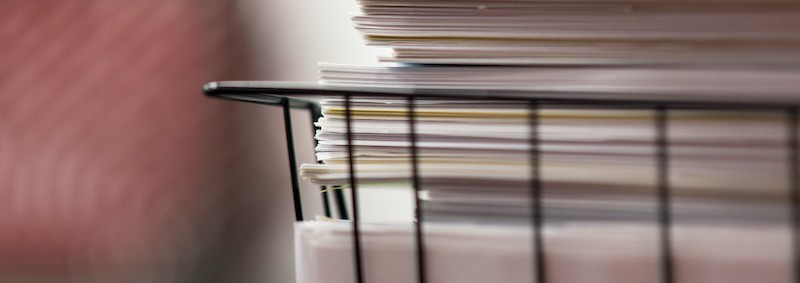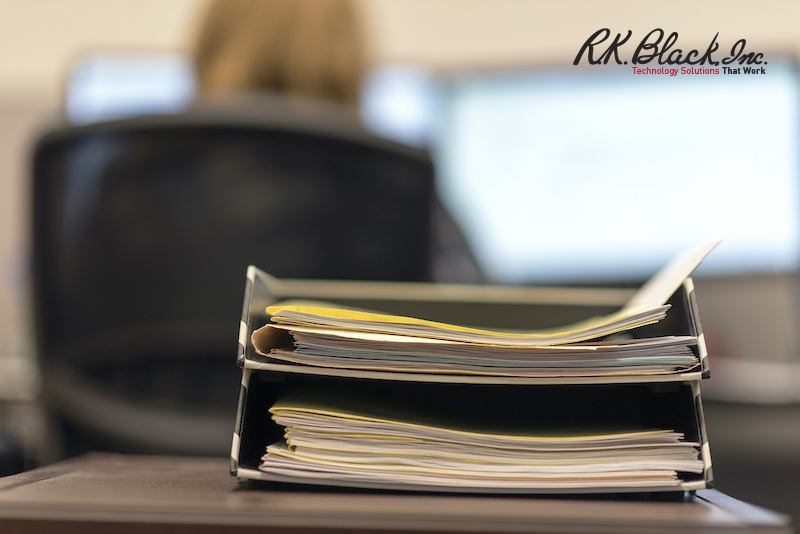
Right now, documents of all kinds are zipping across the world, from one computer to another, from one outbox to another inbox — some documents sensitive and some, not so sensitive.
With so many people now working remotely, many are using email to send files containing private information, such as names, addresses, social security numbers, banking information and so on.
The problem? Email is not secure.
Email is (generally) not secure
If an identity thief were a leprechaun, this sending and receiving of files would be the rainbow, and these emails, the proverbial pot of gold. They contain all the information needed to take identities, to raid associated bank accounts and to ruin lives.
All the bad guys need is to to breach the email service provider, or to hack your email, your recipient’s email and then they’ve got everything.
Also, it’s important to remember if you are using Gmail or another free email account, however you feel about data-mining, the account is not free. You and your data are the product. Google and other “free” email providers mine your inbox for information which they can use to sell to marketing and other organizations. Knowing this, data breaches aside, do you feel secure about sending SSN-bearing information through your data-mined free email?
Not only is email generally not secure, email is also the means by which many bad actors launch their social engineering or phishing schemes, sending out emails bearing virus-laden links or attachments. So while you are innocent in sending your emails with attached files, those receiving those attachments may be hesitant to open them — as they should be.
So how do you send sensitive documents securely? Read on.

How to securely transfer sensitive documents
Here are just a few ways you can securely deliver your sensitive documents.
Deliver your documents the old-fashioned way, sort of (Person to person)
The obvious best way is to personally and physically hand the sensitive information to the person for whom it is intended. How you pass it to them, whether in a packet of papers, a thumb-drive or a CD, that’s your business. At least this way you know only two set of eyes will see this information, yours and those of person you want to see it.
There’s no middleman. There are no algorithms sifting through mountains of personal information to be sold to marketing companies. And there is no electronic reservoir of data waiting for the next security breach to distribute social security numbers everywhere. It’s just you, your information and the person you are giving it to. Your business stays your business.
Fax your documents — but only under some conditions
There’s a reason nearly 75 percent of all medical communication is transmitted by fax in the medical field. Yeah, it’s old tech, but traditional fax tends to be seen in the healthcare industry as more secure. It may be, but if you use this method, make sure the documents are:
- sent to the correct number,
- not left unattended on the fax machine,
- sent directly to the receiving entity,
- are transmitted with a cover page concealing the content within , and
- shredded or destroyed once received and used.
Otherwise, it's not really secure. If you know all of those conditions are fulfilled, you should be fairly safe sending documents via fax.
Use an encrypted file-sharing service to share documents
Ah! Finally! Welcome to the 2020s! With the cloud-based, encrypted file-sharing services we have today, you may not have to worry about USBs, CDs or paper hand-offs as we talked about earlier or even fax machines. A relief, right? So what are these services?
Basically, you can scan or upload a document, and as some of these services work, the file is encrypted as it is uploaded and held, and is decrypted after being downloaded by the person with whom you share the link. This ensures no middleman can read the document and the only people able to access it are those with whom you share the link.
Among the most popular encrypted file-sharing services are Box, Dropbox, GoogleDrive and OneDrive, among others.
Box and Dropbox offer similar services — free up to a certain amount of data and then a subscription after that with more data allowances and other new features.
GoogleDrive, while the service is encrypted as said above, it’s a free service offered by a company that collects, mines and sells data. So while your information may be concealed and illegible by non-Google entities, it probably is not so concealed to Google.
OneDrive by Microsoft comes with the MS Office Suite and Office 365. Naturally, it works well with Word, Excel and Powerpoint. Like Box and Dropbox, it’s free up to a certain amount of storage and then you pay for more storage.
Those are just a few services out there, but while a document shared via any one of these or other encrypted file sharing services is more secure than just attaching a document to an email and sending it, still even these services have been breached. It is for this reason it might be wise to encrypt your files before uploading them to such a service, that way you would be putting a lock box within a lock box.
Hopefully these tips help you protect yourself, your loved ones, your coworkers and your organization as you share sensitive documents, whether personal or work-related.
Stay safe and stay secure.
About R.K. Black, Inc.
R.K. Black, Inc. is an Oklahoma City-based, family-owned leading provider of office technology solutions to small and medium-sized businesses in Oklahoma and Kansas. We specialize in everything business technology from copier, fax, printer and scanner technology to document management, onsite paper shredding services, VoIP phone systems and managed IT support to video surveillance solutions.
If you want to learn more about us, feel free to explore the website, read our other blogs or click the button below to be contacted by one of our reps and tell you! Also, be sure to keep watching our social media channels on Facebook and Twitter for more business tips from our blog.


